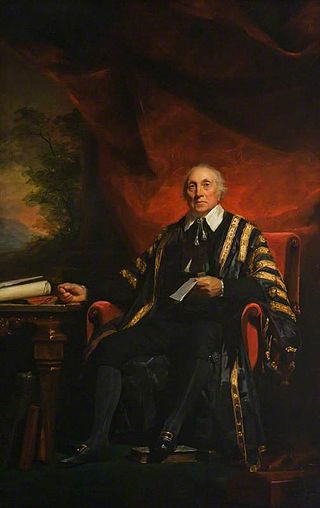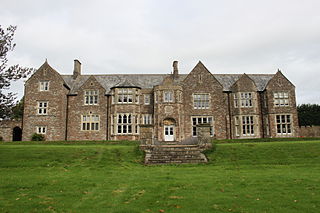Related Research Articles

Marquess of Sligo is a title in the Peerage of Ireland. It was created in 1800 for John Browne, 3rd Earl of Altamont. The Marquess holds the subsidiary titles of Baron Mount Eagle, of Westport in the County of Mayo, Viscount Westport, of Westport in the County of Mayo, Earl of Altamont, in the County of Mayo, Earl of Clanricarde and Baron Monteagle, of Westport in the County of Mayo. All these titles are in the Peerage of Ireland, except the Barony of Monteagle, which is in the Peerage of the United Kingdom. The latter peerage entitled the Marquesses to a seat in the House of Lords prior to the House of Lords Act 1999. The Earldom of Clanricarde was inherited by the sixth Marquess in 1916 according to a special remainder in the letters patent.

Viscount Downe is a title that has been created twice in the Peerage of Ireland. The first creation came in 1675 for William Ducie. However, the title became extinct on his death in 1679. The second creation came in 1680 for John Dawnay. He had earlier represented Yorkshire and Pontefract in the English House of Commons. His son, the second Viscount, also represented these constituencies in the House of Commons. His grandson, the third Viscount, sat as a Member of Parliament for Yorkshire but died from wounds received at the Battle of Campen in 1760. He was succeeded by his younger brother, the fourth Viscount, who represented Cirencester and Malton in Parliament.

Viscount Gage, of Castle Island in the County of Kerry of the Kingdom of Ireland, is a title in the Peerage of Ireland. It was created in 1720 for Thomas Gage, along with the subsidiary title of Baron Gage, of Castlebar in the County of Mayo, also in the Peerage of Ireland. In 1744 he also succeeded his cousin as eighth Baronet, of Firle Place. The titles remain united. The Gage family descends from John Gage, who was created a baronet, of Firle Place in the County of Sussex, in the Baronetage of England on 26 March 1622. His great-grandson, the seventh Baronet, represented Seaford in Parliament. He was succeeded by his first cousin, Thomas Gage, 1st Viscount Gage, the eighth Baronet. He sat as a Member of Parliament for Minehead and Tewkesbury and also served as Governor of Barbados. In 1720, 24 years before succeeding in the baronetcy, he was raised to the Peerage of Ireland as Baron Gage and Viscount Gage. His second son was the military commander the Hon. Thomas Gage.

Viscount Hawarden is a title in the Peerage of Ireland.

Lord Frederick Campbell was a Scottish nobleman and politician. He was Lord Clerk Register of Scotland, 1768–1816; Member of Parliament (MP) for Glasgow Burghs (1761–1780) and for Argyllshire (1780–1799).

Francis Ingram-Seymour-Conway, 2nd Marquess of Hertford, KG, PC, PC (Ire), styled The Honourable Francis Seymour-Conway until 1750, Viscount Beauchamp between 1750 and 1793, and Earl of Yarmouth between 1793 and 1794, was a British peer and politician. He held seats in the Irish House of Commons from 1761 to 1776 and in the British House of Commons from 1766 to 1794. He served as Chief Secretary for Ireland under his father. He subsequently held positions in the Royal Household, including serving as Lord Chamberlain between 1812 and 1822.
There have been two baronetcies created for persons with the surname Waller, one in the Baronetage of Ireland and one in the Baronetage of the United Kingdom. One creation is extant as of 2019.
There have been four baronetcies for persons with the surname Blake, one in the Baronetage of Ireland, two in the Baronetage of Great Britain and one in the Baronetage of the United Kingdom. Two of the creations are extant as of 2010. The Blake Baronetcy, of Menlough in the County of Galway, was created in the Baronetage of Ireland on 10 July 1622 for Valentine Blake, Mayor of Galway in 1611 and 1630 and a member of the Irish House of Commons for County Galway. His grandfather Thomas Blake had preceded him as Mayor. The second Baronet was a member of the Irish Parliament for Galway Borough. The third Baronet represented both County Galway and Galway Borough in Parliament. The sixth Baronet was a member of the Irish House of Commons for County Galway. He was the first Catholic gentlemen of distinction to join William of Orange. The twelfth Baronet represented Galway Borough in the British House of Commons. The fourteenth Baronet was high sheriff of County Galway in 1872. See also the Blake Baronetcy of Twizell Castle below.

Sir John Aubrey, 6th Baronet was a British Tory politician. In 1786, he succeeded to his father's baronetcy.

Sir John Shelley, 5th Baronet, of Michelgrove in Sussex, was a British politician who sat in the House of Commons from 1751 to 1780.

Sir Henry Strachey, 1st Baronet was a British civil servant and politician who sat in the House of Commons for 39 years from 1768 to 1807.

Peniston Lamb, 1st Viscount Melbourne, known as Sir Peniston Lamb, 2nd Baronet, from 1768 to 1770, was a British politician who sat in the House of Commons from 1768 to 1793. He was the father of Prime Minister William Lamb, 2nd Viscount Melbourne.

Sir Lucius Henry O'Brien, 3rd Baronet PC (Ire) was an Irish baronet and politician for 34 years.
The High Sheriff of Longford was the British Crown's judicial representative in County Longford, Ireland from the 16th century until 1922, when the office was abolished in the new Free State and replaced by the office of Longford County Sheriff. The sheriff had judicial, electoral, ceremonial and administrative functions and executed High Court Writs. In 1908, an Order in Council made the Lord-Lieutenant the Sovereign's prime representative in a county and reduced the High Sheriff's precedence. However the sheriff retained his responsibilities for the preservation of law and order in the county. The usual procedure for appointing the sheriff from 1660 onwards was that three persons were nominated at the beginning of each year from the county and the Lord Lieutenant then appointed his choice as High Sheriff for the remainder of the year. Often the other nominees were appointed as under-sheriffs. Sometimes a sheriff did not fulfil his entire term through death or other event and another sheriff was then appointed for the remainder of the year. The dates given hereunder are the dates of appointment. All addresses are in County Longford unless stated otherwise.

Sir William Dolben, 3rd Baronet (1727–1814) was a British Tory MP and a zealous campaigner for the abolition of slavery.
There have been two baronetcies created for persons with the surname Fetherston, one in the Baronetage of England and one in the Baronetage of Ireland. Both are extinct.
The Domvile Baronetcy, of Templeogue in the County of Dublin, was created in the Baronetage of Ireland on 21 December 1686 for Thomas Domvile, who represented Mullingar in the Irish House of Commons. He was the son of William Domville, son of Gilbert Domville, MP for Dublin, member of an ancient Cheshire family. The second Baronet was a member of the Irish Parliament for County Dublin. The title became extinct on his death in 1768. Sir William Domvile, brother of the first Baronet, represented Armagh and Dublin in the Irish Parliament. William Domville, elder brother of the aforementioned Gilbert Domvile, was the ancestor of the Domville baronets of St Alban's.
Captain John Luttrell-Olmius, 3rd Earl of Carhampton, styled The Honourable John Luttrell between 1768 and 1787 and as The Honourable John Luttrell-Olmius between 1787 and 1829, was an Irish naval commander and politician who sat in the House of Commons between 1774 and 1785.
Sir FitzGerald Aylmer, 6th Baronet was an Irish politician and baronet.
Sir Thomas Fetherston, 2nd Baronet, alias Fetherstonhaugh, was an Anglo-Irish politician.
References
- ↑ E. M. Johnston-Liik, MPs in Dublin: Companion to History of the Irish Parliament, 1692-1800 (Ulster Historical Foundation, 2006), p.87 (Retrieved 4 April 2020).